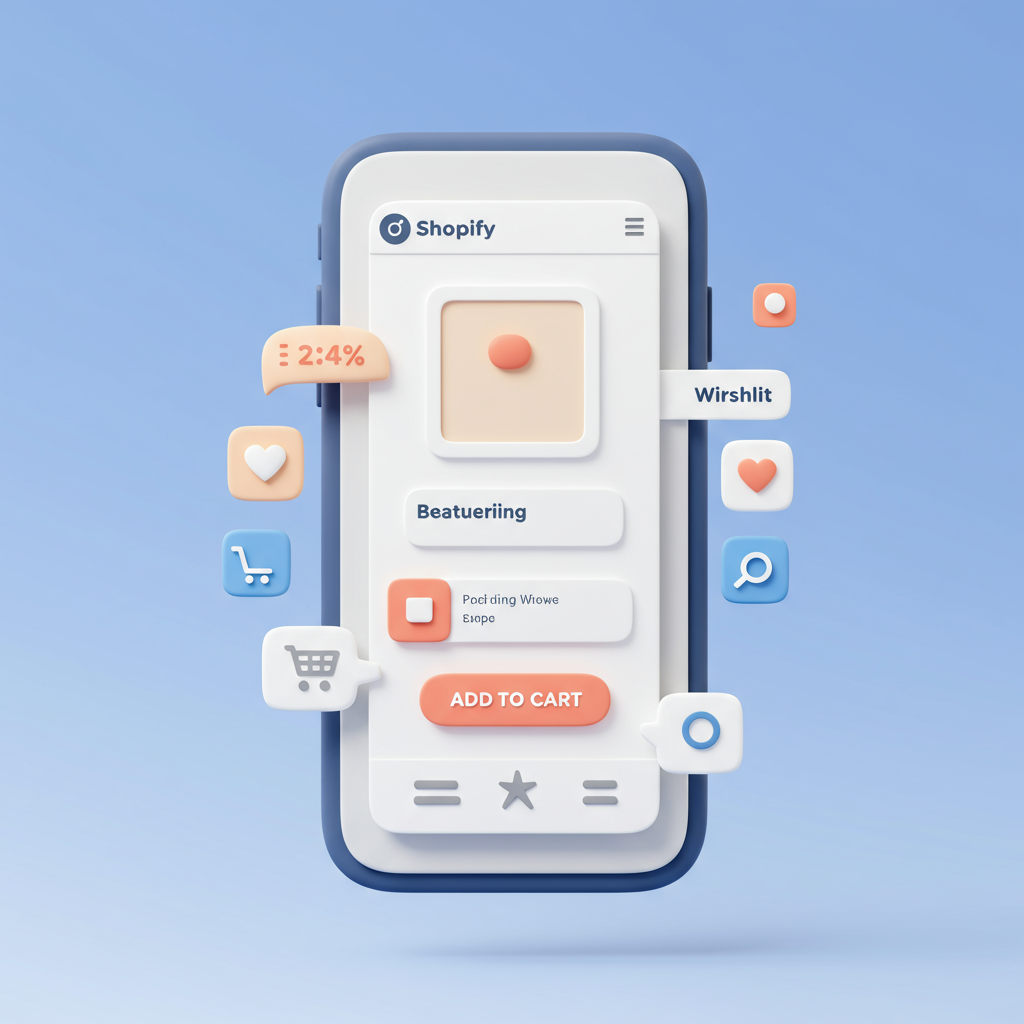Discover why designing for mobile first isn’t just a trend, but the cornerstone of e-commerce success in today’s digital landscape.
Hello fellow merchants! Today, I want to share some insights that have profoundly impacted my own e-commerce journey and, I believe, can transform yours too. We’re going to talk about designing a mobile-first Shopify store.
In an age where smartphones are practically extensions of our hands, it’s no longer enough to simply have a website that *works* on mobile. We need to build our stores with mobile users as our primary focus.
Think about it: how often do you browse or shop on your phone versus your desktop? Chances are, your phone is your go-to device for quick searches, social media, and increasingly, online purchases.
Statistics consistently show that mobile commerce accounts for a significant, and growing, percentage of online sales. Ignoring this trend is akin to leaving money on the table.
My journey into mobile-first design wasn’t just about following a trend; it was born out of necessity. I noticed my mobile bounce rates were high, and conversions were lagging compared to desktop.
That’s when I realized I needed to flip my perspective. Instead of designing for desktop and then adapting for mobile, I started designing for the smallest screen first, then scaling up.
This approach, known as mobile-first design, forces you to prioritize. You have limited screen real estate, so every element must earn its place.
It encourages simplicity, clarity, and speed – all crucial factors for a positive user experience, regardless of the device.
So, how do we translate this philosophy into a tangible Shopify store? Let’s dive into the practical steps I’ve taken and recommend.
**Choosing the Right Theme:** This is your foundation. When selecting a Shopify theme, don’t just look at its desktop preview. Open it on your phone, a tablet, and even resize your browser window.
Look for themes explicitly advertised as “responsive” and “mobile-optimized.” Themes like Shopify’s own Dawn or Sense are excellent starting points, built with modern mobile practices in mind.
**Streamlined Navigation:** On mobile, complex menus are a nightmare. I always advocate for simplified navigation. Think hamburger menus, clear labels, and limiting the number of top-level categories.
A sticky header, where your logo and navigation icon remain visible as the user scrolls, can also greatly enhance usability on smaller screens.
**Optimized Product Pages:** Your product pages are where the magic happens. For mobile, high-quality, optimized images are paramount. They should load quickly and be easily zoomable.
I ensure my product descriptions are concise and scannable, using bullet points and short paragraphs. The “Add to Cart” button needs to be prominent, thumb-friendly, and ideally, sticky as well.
**A Seamless Checkout Process:** This is often where mobile users abandon their carts. My goal is always to make the checkout as frictionless as possible.
Shopify’s native checkout is already quite optimized, but you can further enhance it by minimizing the number of steps and enabling autofill options for returning customers.
**Legible Typography:** Text size and font choice are critical. Small, fancy fonts might look good on a large monitor but become unreadable on a phone.
I stick to clean, sans-serif fonts with sufficient line height and letter spacing. Ensure your body text is at least 16px for comfortable reading on mobile.
**Image and Media Optimization:** Large image files are performance killers. I always compress my images without sacrificing quality. Tools like TinyPNG or Shopify’s built-in optimization are invaluable.
Consider lazy loading for images below the fold, meaning they only load as the user scrolls down, significantly speeding up initial page load times.
**Touch-Friendly Elements:** Every button, link, and interactive element needs to be large enough to be easily tapped with a thumb or finger.
Avoid placing interactive elements too close together, as this can lead to accidental taps and user frustration.
**Clear Call-to-Actions (CTAs):** Your CTAs should stand out. Use contrasting colors and clear, action-oriented language. Make them impossible to miss.
**Rigorous Testing:** This step is non-negotiable. I can’t stress this enough: *test your store on actual mobile devices*. Don’t just rely on browser emulators.
Use Google’s Mobile-Friendly Test, but also grab your phone, your friend’s phone, and a tablet. Test on different browsers like Chrome, Safari, and Firefox.
Navigate through your entire customer journey, from homepage to checkout confirmation. Are there any awkward scrolls? Are buttons too small? Is text overlapping?
**Mobile-Friendly Apps and Integrations:** If you’re using third-party Shopify apps, ensure they are also mobile-responsive. Some apps can inadvertently break your mobile layout.
Always check an app’s mobile compatibility before installing it, or at least test it thoroughly on mobile after installation.
**Performance Optimization Beyond Images:** Beyond images, consider minifying your CSS and JavaScript files. Shopify themes often handle some of this, but custom code or apps might add bloat.
Browser caching can also significantly improve load times for returning visitors. A faster site means happier customers and better search engine rankings.
**Accessibility Considerations:** A mobile-first approach naturally lends itself to better accessibility. Ensure good color contrast, provide alt text for all images, and consider keyboard navigation for those who don’t use touch.
The benefits of embracing a mobile-first strategy are immense. You’ll likely see improved SEO, higher conversion rates, reduced bounce rates, and most importantly, a much happier customer base.
It’s about creating an experience that feels natural and effortless, no matter how your customers choose to interact with your brand.
What are your thoughts on designing for mobile first? Have you implemented any of these strategies, and what results have you seen? I’d love to hear your perspective.
By putting your mobile users first, you’re not just adapting to the present; you’re future-proofing your Shopify store for continued success. It’s an investment that truly pays off.






